After a total of 365 days of space flight, Space Shuttle Discovery retires from the fleet of NASA’s Shuttle Space programme.
 Discovery’s crew of six completed their mission at the International Space Station clocking 7 days 23hr of “Open Hatch” or the time the spacecraft were structurally inter-connected. They successfully performed 2 space walks, installed the Express Logistics Carrier 4, delivered Robonaut-2 and the Permanent Multipurpose Module
Discovery’s crew of six completed their mission at the International Space Station clocking 7 days 23hr of “Open Hatch” or the time the spacecraft were structurally inter-connected. They successfully performed 2 space walks, installed the Express Logistics Carrier 4, delivered Robonaut-2 and the Permanent Multipurpose Module
This new addition was the final US structural contribution to the station, which is almost complete with a total weight of approximately 408tons, most of which was carried by Shuttle Spacecraft. Among the few modules due for delivery in the next months are the ELC3 and the Russian MLM module.
The Space Shuttle Discovery visited the International Space Station in 13 successful missions since 1999. Like in all previous occasions, the crew followed a carefully scripted undocking procedure marking the conclusion of a very productive and memorable stay at the station.
 The crew of Mission 133 moved back to the Shuttle and verified the safety of the hatch on their side. Their colleagues at the Space Station went through a similar procedure; Commander Scot Kelly and astronaut Paolo Nespoli removed the sheath and padding from the connecting chamber and inspected every centimetre of the hatch for damage and debris, making sure that the interface was clear and the elastic seal was operating efficiently.
The crew of Mission 133 moved back to the Shuttle and verified the safety of the hatch on their side. Their colleagues at the Space Station went through a similar procedure; Commander Scot Kelly and astronaut Paolo Nespoli removed the sheath and padding from the connecting chamber and inspected every centimetre of the hatch for damage and debris, making sure that the interface was clear and the elastic seal was operating efficiently.
In the next couple of hours the integrity of the space station was finally restored when the hatch was closed after several tests by the astronauts. A hermetic closure of all hatches is vital for the control spaceship’s environment to avoid dangerous leakage of gases and loss of pressure.
The Shuttle undocked from the Station and continued with their plan with a fly-by around ISS. No opportunity is lost and that moment was important to inspect and record the status of the outside features of the Space Station. Similarly, an examination of the top of Discovery was viable from the station. To facilitate recording this manoeuvre, the shuttle kept its cargo bay open, extending Canadarm 1 as it revolved around the station before a final burn to head towards Earth.
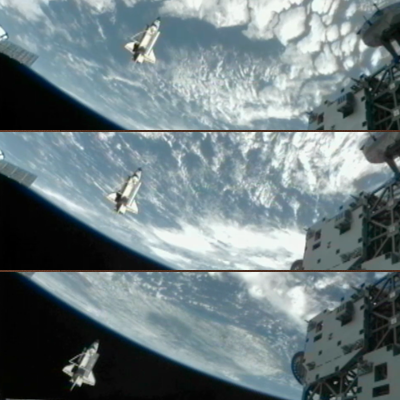

On 7 March, a day after undocking from ISS, the crew received a surprise wakeup call with a message from actor William Shatner, famous for playing the role of Captain Kirk in the 1966-1969 television series “Star Trek,” now a classic in Sci-Fi circles.
Still orbiting the planet, the astronauts conducted a final inspection of the heat protection system using a camera mounted on the Canadarm. The images were transmitted to Kennedy Space Centre for analysis before receiving authorisation to go ahead with re-entry procedures.




ENTERING THE ATMOSPHERE
Shuttle Discovery approached our atmosphere orbiting more closely in preparation for the final descent. Flying over the west side of Australia, the crew performed the final 3-minute deorbit burn at 15:57 UTC.
 At deorbit burn, Discovery was rotated tail-first with the cockpit oriented towards our planet. This is the only time it actively brakes, firing its engines against the direction of flight.
At deorbit burn, Discovery was rotated tail-first with the cockpit oriented towards our planet. This is the only time it actively brakes, firing its engines against the direction of flight.
Shortly after the burn, the spacecraft was turned around keeping her nose pointing downwards for an initial angle of re-entry. As the vehicle gained velocity, at an altitude of approximately 129 km, her nose was lifted by 43 degrees to find the best angle to reduce velocity while facing the immense heat formed at that stage.
The heat generated at re-entry is the resultant of friction between air particles and the surface of the spacecraft travelling at extremely high speeds, this creates an increase in air compression without time to cool off. The speeds involved could be as high as 7.5 km per second, releasing temperatures as hot as 1,593 degrees Celsius, enough to melt nickel and iron.
In order to survive re-entry, spaceships must be fitted with a heat protection shield that stands extreme temperatures.
 The fleet of the Space Shuttle Programme is fitted with the Thermal Protection System (TPS), which consists of various materials that form part of the outer skin of the vehicle. These materials are largely derived from highly processed sand.
The fleet of the Space Shuttle Programme is fitted with the Thermal Protection System (TPS), which consists of various materials that form part of the outer skin of the vehicle. These materials are largely derived from highly processed sand.
The system is designed to withstand temperatures from minus 156 degrees Celsius of cold space, to approximately 1,650 degrees Celsius at re-entry .
The materials of the TPS include:
- Reinforced carbon-carbon (RCC): On the wing leading edges, nose cap, external tank attachment. Protects from temperatures that exceed 1,260 degrees Celsius.
- Black high-temperature reusable surface insulation (HRSI) tiles: On the upper forward fuselage, around the forward fuselage windows, the entire underside, leading and trailing edges of the vertical stabilizer, wing glove areas, elevon trailing edges and areas adjacent to RCC in the upper wing surface and upper body flap surface. They protect from temperatures below 1,260 degrees Celsius.
- Black fibrous refractory composite insulation (FRCI) tiles: Replace some HRSI in selected areas.
- White low-temperature reusable surface insulation (LRSI) tiles: On most of the fuselage, vertical tail, upper wings and the Orbital Manoeuvring System/Reaction Control System (OMS/RCS) pods. They protect from temperatures below 649 degrees Celsius.
- White advanced flexible reusable surface insulation (AFRSI) fabric: This quilted material replaces most LRSI tiles in Discovery and Atlantis. They also protect from temperatures below 649 degrees Celsius.
- White blankets made of coated Nomex felt reusable surface insulation: On upper payload bay doors, portions of mid and aft fuselage sides and portions of the upper wings and (OMS/RCS) pods. They protect from temperatures below 370 degrees Celsius.
- Other materials vary from thermal panes for the windows, gap fillers for hatches, umbilical doors, vent doors, and gaps between tiles.
 Once inside our atmosphere, the spacecraft slowed down further thanks to a manoeuvre of roll and roll-reversal. This meant that the shuttle performed three 8-minute rolls of up to 80 degrees, which progressively slowed her down from a speed of Mach 25 (2,8000km/h) to gradually slower speeds as it flew over South America, Guatemala and the Gulf of Mexico, towards Florida. This gave NASA the opportunity to take pictures of Discovery at Mach 18 and Mach 6 for further analysis to learn more about high speed flight.
Once inside our atmosphere, the spacecraft slowed down further thanks to a manoeuvre of roll and roll-reversal. This meant that the shuttle performed three 8-minute rolls of up to 80 degrees, which progressively slowed her down from a speed of Mach 25 (2,8000km/h) to gradually slower speeds as it flew over South America, Guatemala and the Gulf of Mexico, towards Florida. This gave NASA the opportunity to take pictures of Discovery at Mach 18 and Mach 6 for further analysis to learn more about high speed flight.


By the time Discovery reached the vicinity of Kennedy Space Centre, it was still flying at supersonic speeds, producing an spectacular sonic boom; an experience shared with the world via live broadcast of the events by NASA-Television.
The world followed Discovery as she continued her trajectory home entering Florida flying over the city of Sarasota. At 225 km from the landing site, it entered the range of the Tactical Air Navigation System (TACAN), which provides bearing information to aid steering toward the runway. On-board computers normally control the flight up to 40 km from its target, when the commander takes over for manual control. At that stage the vehicle followed a semi-circular trajectory around the landing strip, using an approach aid called the Microwave Scanning Beam Landing system.
The final manoeuvres involved a very rapid final descent, 20 times faster than a commercial airliner, slowing down rapidly by lifting the nose on the very last moments before touchdown of the rear landing gear. The front landing gear followed and the pilot deployed a drag chute to help stop the aircraft. The point where the front gear stopped on the runway will be permanently marked to commemorate the final flight of Space Shuttle Discovery.
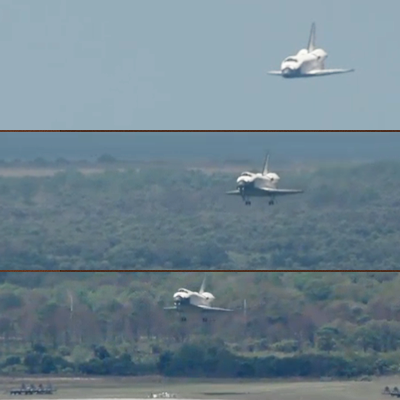
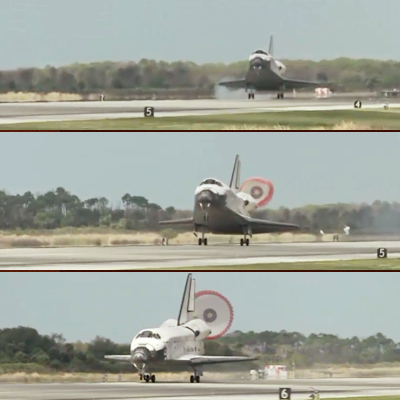


Touchdown on runway 15 of Kennedy Space Centre in Florida, at 16:57 UTC on Wednesday 9th March 2011, marked the conclusion of Mission STS-133 with a total elapsed time of 12 days, 19 hours, 4 minutes and 4 seconds.
After the memorable landing, a caravan of vehicles approached the spacecraft stopping at a safe distance to wait for heat and gases to dissipate. When they received clearance from Mission Control they proceeded to inspect and secure the vehicle.
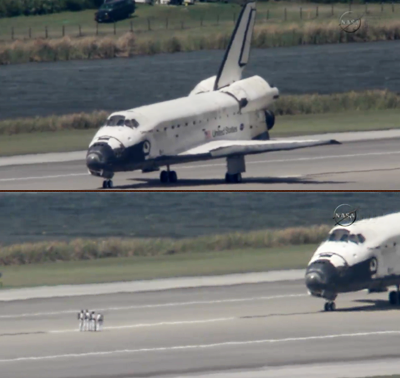

The Astronauts were transferred to a temporary enclosure for a health check and finally emerged to meet the party of officials and fellow team members from Mission 133. They gathered around Discovery and received all types of congratulations for a job well done.


NASA administrator, Charles F. Bolden was there to greet the crew. Among other officials, Flight Director Brian Lunney was also present to welcome the astronauts. All along, the technical team of Kennedy Space Centre were looking after the spacecraft and commencing the retrieval of the vast amounts of data collected during the mission.
In a short statement for the media, with Discovery in the background, Commander Steve Lindsey thanked the team involved in one of the most successful and trouble free missions of the Shuttle Space Programme. Next, the astronauts boarded the Astro-van, the vehicle that drove astronauts since the first missions; they retired to meet their families.
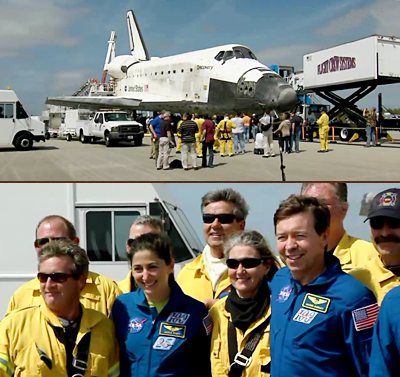



After lunch, they gathered again for the official media conference, in which the crew mentioned the sadness of leaving behind such a healthy vehicle, a testament to the passion, dedication and attention to detail of all teams at Kennedy Space Centre. Although no comment was done about plans of commercial companies taking over space flight; Commander Lindsay highlighted the virtue of discipline to maintain a vehicle of this complexity. They also stated that this is the best time to become an astronaut as many nations are now joining efforts to continue space exploration, which will become a part of the world of the future.

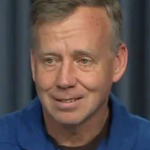





The end of this mission was also particularly significant to ISS Flight Director Brian Lunney, who after 10 years working at NASA, with 300 shifts at his post, will be moving to work with a private space research company (Odyssey Space Research), a trend followed by many talented people at NASA as the 30 year programme comes to an end.
Farewell Discovery!
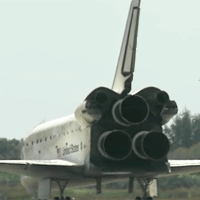
”Don't cry because it's over. Smile because it happened.” Theodor Seuss Geisel, attributed.
Notable landmarks:
- Discovery clocked 365 days of flight, the longest in history.
- Discovery flew 13 times to the ISS since 1999, most than any other shuttle.
- Discovery completed 39 successful flights without major flaws.
- Discovery was the first shuttle to do the rotation inspection manoeuvre.
- This spacewalk marked the 200th in the history of NASA.
BEST FOOTAGE OF LAUNCH AND LANDING OF DISCOVERY
24 Feb – 9 Mar 2011 + Great Soundtrack! Courtesy of NASA-TV
IMAGE GRABS FROM MISSION 133
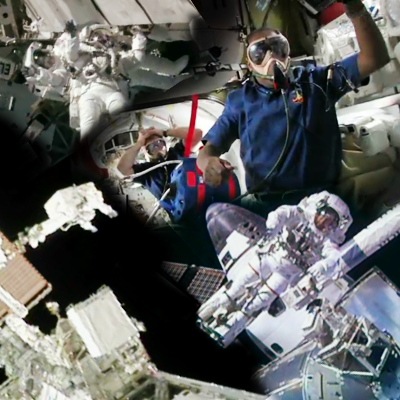



References
¤ “Captain Kirk wakes up shuttle crew” (2011). MyFox. 7 March 2011. [Online]. Available here. (Accessed: 9 March 2011).¤ “International Space Station” (2011). NASA. [Online]. Available here. (Accessed: 9 March 2011).
¤ “International Space Station Imagery: Underside view of Discovery” (2005). NASA. [Online]. Available here. (Accessed: 9 March 2011).
¤ “NASA Developing New Heat Shield for Orion” (2006). NASA. [Online]. Available here. (Accessed: 9 March 2011).
¤ “NASA Television” (2011). NASA. [Online]. Available here. (Accessed: 9 March 2011).
¤ “Real World: Space Shuttle Thermal Protection System” (2008). NASA. [Online]. Available here. (Accessed: 9 March 2011).
¤ “Space Shuttle” (2006). NASA. [Online]. Available here. (Accessed: 25 February 2011).
¤ “Space Shuttle Basics” (2003). NASA. [Online]. Available here. (Accessed: 10 March 2011).
¤ “Space Shuttle Orbiter Systems: Thermal Protection System” (2000). NASA. [Online]. Available here. (Accessed: 9 March 2011).
¤ “STS-133: Discovery” (2011). NASA. [Online]. Available here. (Accessed: 25 February 2011).
¤ “STS-133: The Highlights” (2011). NASA. [Online]. Available here. (Accessed: 10 March 2011).
No comments:
Post a Comment